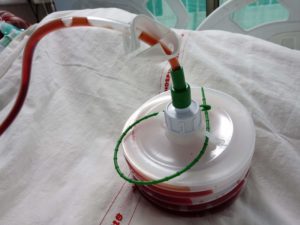The most commonly performed surgical procedure is tube thoracostomy. As a life-saving procedure, general surgeons, and respiratory physicians may at one time or the other be required to perform tube thoracostomy.
There are many sizes of chest tubes. To classify the tubes according to their internal diameter, manufacturers use a French catheter scale (abbreviated Fr). One Fr is one-third of a millimeter. Chest tubes come in sizes from 6-40 Fr. You can learn more about the thoracic chest tube via https://www.centese.com/thoracic-surgery/.

Image Source: Google
Straight tubes and pigtail tubes are options for doctors. The tubes have a coil at the ends. They will choose the right size chest tube for the patient and procedure.
The chest tubes look like large, clear plastic straws. There are three main areas.
- Drainage holes are located at the tip.
- There are markings on the body that indicates how far a doctor has inserted a tube.
- The tail or end tapers slightly to connect to a drainage or suction system.
Chest tubes generally come in two sizes: small-bore or large-bore. Large-bore chest tubes are larger than 20 Fr, while small-bore chest tubes are smaller than 20 Fr.
There are smaller tubes available, and they are called pleural catheters. For long-term use, doctors will place them under the skin on the chest or tunnel them into a vein.
For those suffering from chronic infection, cancer, liver disease, or a buildup of pleural fluid, a pleural catheter might be required.